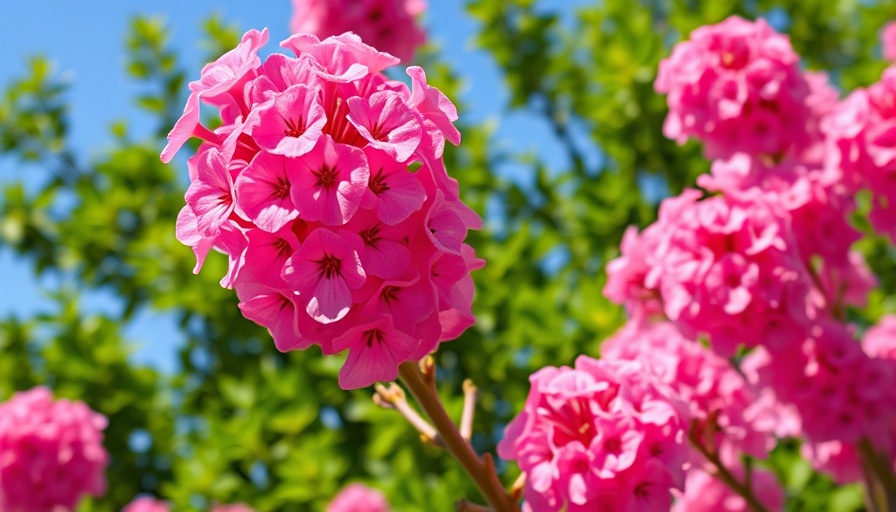
Unlock the Beauty of Crape Myrtles in Your Landscape
Crape myrtles, cherished for their breathtaking summer blooms and year-round appeal, are a favorite choice for homeowners seeking to enhance their gardens. When effectively planted and cared for, these vibrant trees can thrive for decades, transforming outdoor spaces into lush sanctuaries.
Understanding Crape Myrtles: Trees or Shrubs?
These versatile plants range drastically in size, from petite shrubs standing at about 3 feet to majestic trees reaching up to 20 feet tall. This duality allows crape myrtles to fit varied landscape needs and desires. Homeowners must understand whether they are looking for a tall centerpiece or a low-growing hedge, as this influences not only the aesthetic but also the planting and care habits required.
A Deep Dive into Planting Practices
The best spot for planting crape myrtles? A sunny location where they can enjoy at least six hours of direct sunlight each day. This sunlight is crucial for encouraging their prolific blooming. Ensuring adequate spacing—10-15 feet from structures—is vital to accommodate their growth and avoid clutter. The proper planting depth is also critical—digging a hole three times wider than the root ball ensures room for healthy root development.
Year-One Care: Establishing Strong Roots
The initial stages of nurturing crape myrtles are critical. They require regular irrigation, especially in dry spells, while being careful not to overwater these flowers. The first fall after planting presents the opportunity for some protective measures; mulching is essential to preserve moisture and prepare for winter.
Pruning: A Balancing Act
Pruning crape myrtles can seem daunting, yet it’s often necessary to maintain their shape and promote new blooms. Best done in late winter, pruning ensures that the trees are not vulnerable to cold damage while allowing them to thrive once the growing season arrives. Regular light trimming, rather than heavy pruning, fosters healthy growth and robust flowering.
Seasonal Care Tips for Lasting Beauty
- Watering: During dry spells, mature trees may need additional water, especially during blooming season. Aim for a consistent routine of about one inch of water per week.
- Fertilizing: A balanced fertilizer in early spring will support vibrant blooms but avoid over-fertilizing to prevent excessive leafy growth overshadowing flowers.
- Winter Preparations: Ensure young crape myrtles are insulated with mulch against harsh weather and wrapped in burlap during extreme cold.
Why Crape Myrtles are Worth the Investment
Adding crape myrtles to your landscape doesn't just enhance visual appeal; it carves out a personal green space that offers relaxation and tranquility. Their changing colors through the seasons—from vibrant summer blossoms to striking fall foliage—ensure that there’s always something to enjoy.
Whether you’re embarking on your gardening journey or a seasoned landscaper, understanding how to grow and care for crape myrtles can enrich your gardening experience. With thoughtful care and the right practices, you’ll be rewarded with a flourishing display of beauty.
For a deeper understanding of plant care and exclusive tips, consider subscribing to our gardening newsletter. Stay informed and embrace the joy of gardening with your crape myrtles and more!
 Add Row
Add Row  Add
Add 




 Add Row
Add Row  Add
Add 

Write A Comment